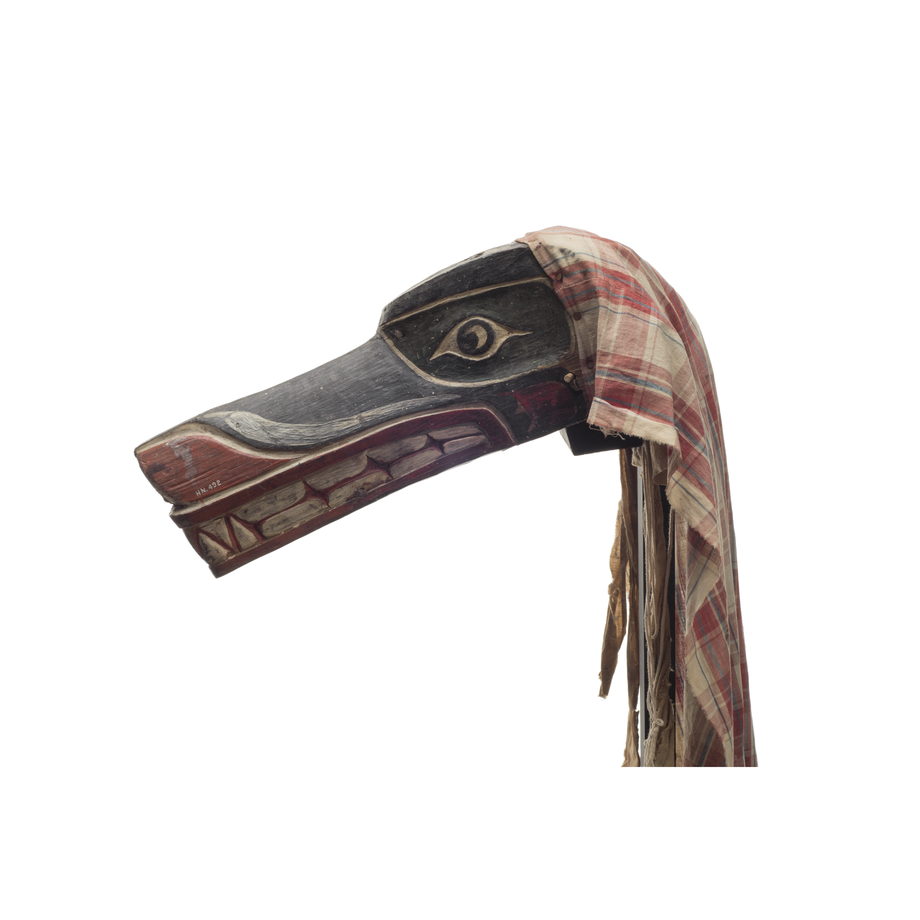Xisiwe'
Wolf
The Kwak´wala word for wolf headdress, xisiwe’ means, “bared teeth on the forehead.” Wolf dancers perform solo or in a pack with a leader, imitating a real wolf pack. In ceremonies, wolves can appear in three different ways; as a member of the tribe of the myth people, an ancestor of one of the ‘namima or extended family groups, or as a being who initiates apprentices.
Owner
Iwakalas, Harry Hanuse, Mamalilikala (Village Island)
Catalogue Information
Provenance
Owned by Harry Hanuse until its forced surrender to Indian Agent William Halliday on March 25, 1922. Halliday later displayed and photographed the seized pieces at the Parish Hall in Alert Bay. After doing an inventory, he crated the items in June, and at the end of September he shipped some of them to the Royal Ontario Museum in Toronto, on long-term loan from the National Museum of Man (now the Canadian Museum of History). They remained in the possession of the ROM until the NMM pulled its loan and returned the pieces to the Nuyumbalees and U'mista cultural societies in 1988. In September 1993 Dan Hanuse Sr. requested that his father's pieces be transferred from Nuyumbalees to U'mista as per the wishes of the majority of Harry Hanuse's descendants.
Materials
Wood, Cedar; Paint; Fibre, Cotton
Accession Number
94.09.016
Physical Description
Carved, painted cedar wolf headdress. There are two drilled holes on top of the head where ears had been attached. There is a red plaid cotton head cover nailed to the mask. One piece of a wooden head support remains inside. There are white painted spots on the top of the skull. Black, green, red, white.
